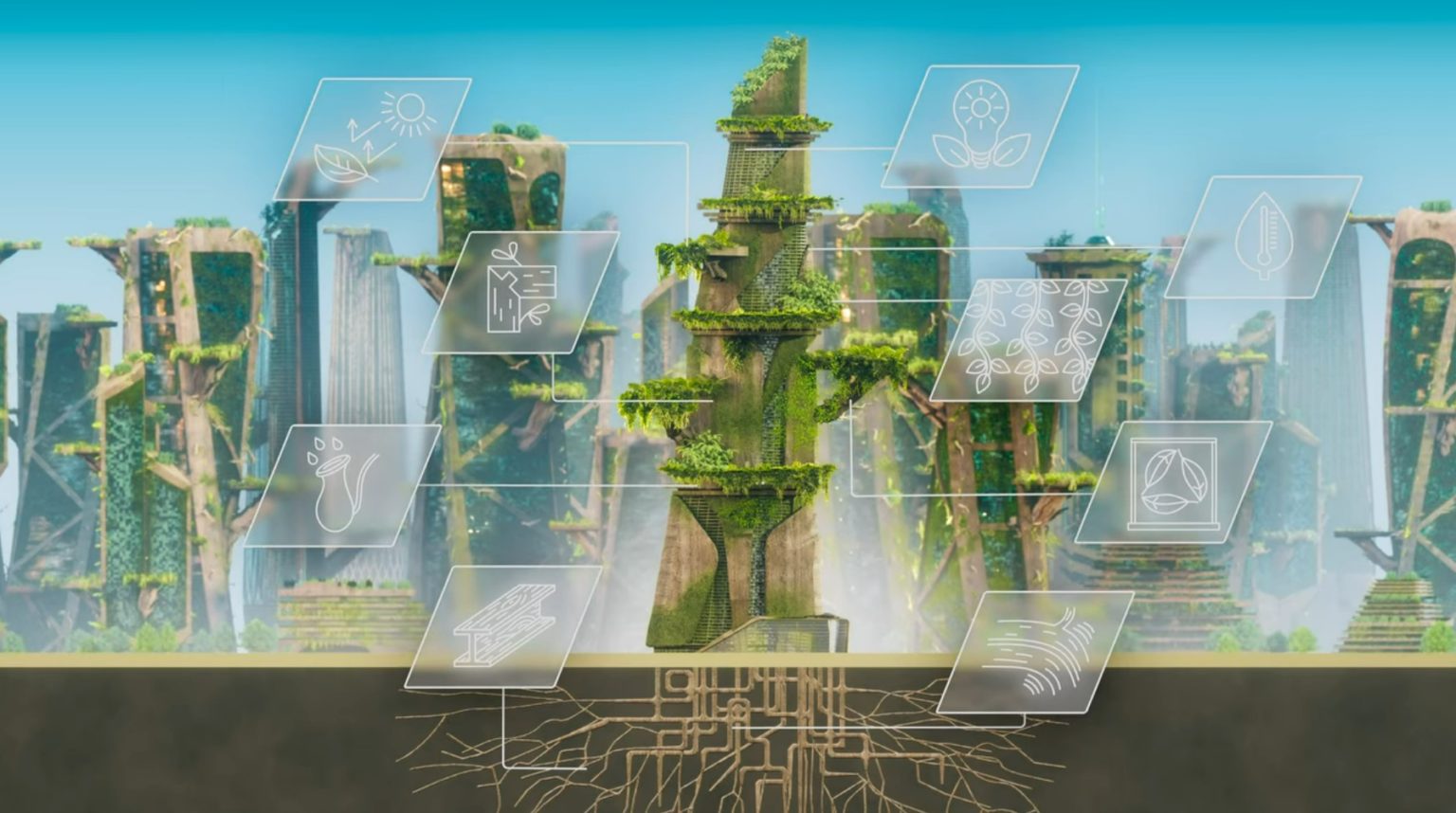
[ad_1]
Nilay Patel of The Verge writes:
The Future Of will dedicate each episode to exploring how a certain subject may be evolving in the years ahead thanks to modern technology. It’s taken nearly three years of work, but The Verge’s first Netflix show — The Future Of — is finally here, and the full season is now streaming on Netflix.
The Future Of is an ambitious look at how everything around us might change over time, narrated by Jurnee Smollett. And it really is a show about everything: our episodes focus on subjects from cheeseburgers and dogs to skyscrapers and life after death. We did our best to envision how these things might change in our lifetimes, the near future, and then the wildest far futures we could imagine. And we did it by talking to the people working on these ideas now — and a few Verge reporters along the way. Think of it like a documentary for the future.
Think of it like a documentary for the future.
We wanted the predictions in The Future Of to be exciting. We wanted them to be a little bit weird. We even wanted some of them to be a little bit scary. (One of my rules for the show was that we shouldn’t casually predict a worldwide surveillance network, a concept that a lot of other ideas seem to depend on.) But the point is to remember that none of this is guaranteed.
One of the main ideas we have at The Verge is that science and technology aren’t just things that happen. People work hard to invent things, people use those inventions in surprising ways, and a new world is constantly coming into focus as that cycle endlessly repeats. So, more than anything, we wanted to make a show that made people feel like an exciting and hopeful future is possible — if we put our minds to it.
“Skyscrapers” – Episode
From vertical cities to sustainable skyscrapers – inventors and designers envision a future of ambitious architecture that could reimagine our cities, and we at Greenroofs.com feel this is a great episode to highlight.
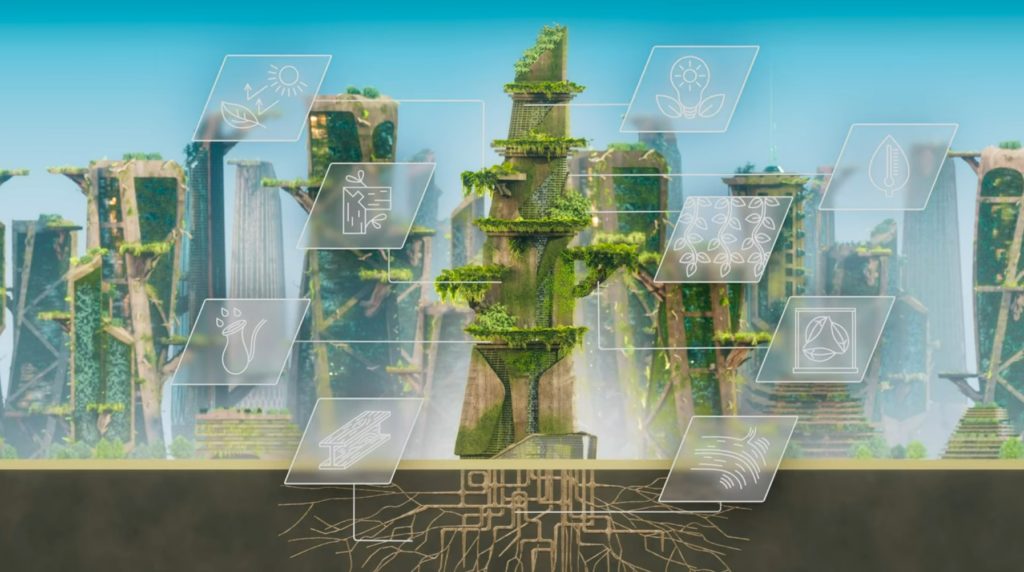
The Future Of Skyscrapers. Screenshot. Skyscrapers could be made out of high-tech living timber, and pitcher plants could collect rainwater for your plumbing. Forget a maintenance person. You’ll need a botanist. Tree roots could serve as a strong yet flexible foundation for the building. Instead of curtains you’ll have branches with leaves. They’ll insulate your home in the winter and block out the sun in the summer. Organic gardens could grow right in the middle of skyscrapers.
Following are a few of the green infrastructure projects highlighted in this episode – just click on the image for more information. It will take you to our Greenroofs.com Projects Database where you can explore amazing Living Architecture Projects from around the world.
BOSCO VERTICALE (VERTICAL FOREST), MILAN, ITALY
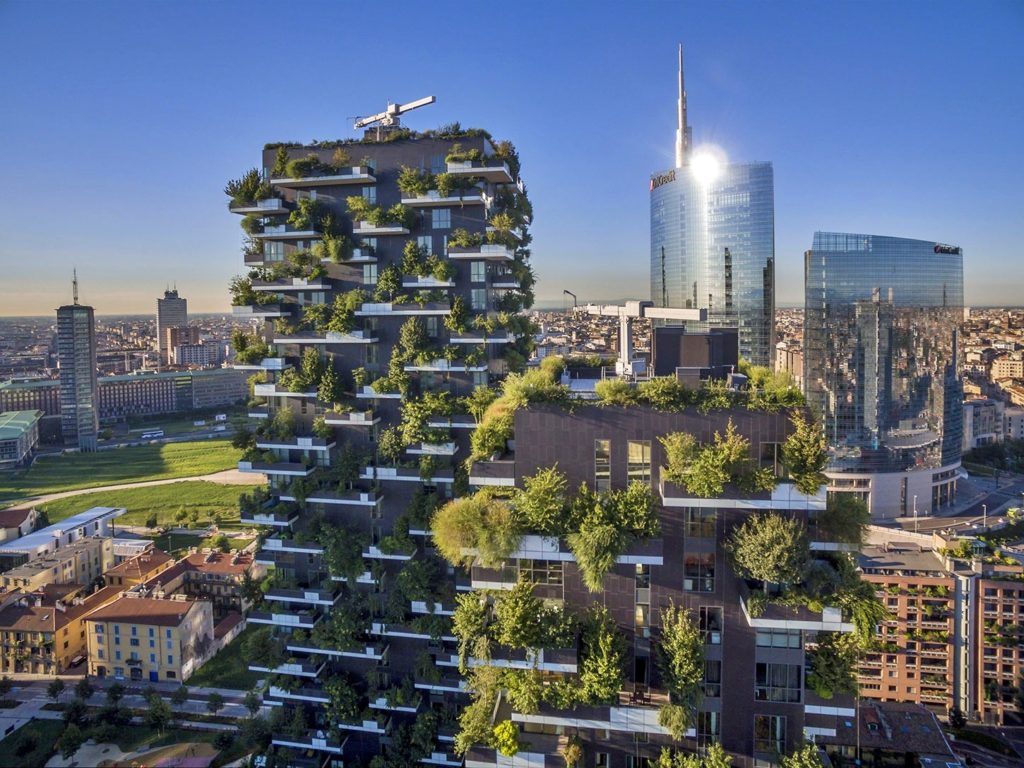
Bosco Verticale, Milan. Photo courtesy Stefano Boeri Architetti
ONE CENTRAL PARK, SYDNEY, AUSTRALIA
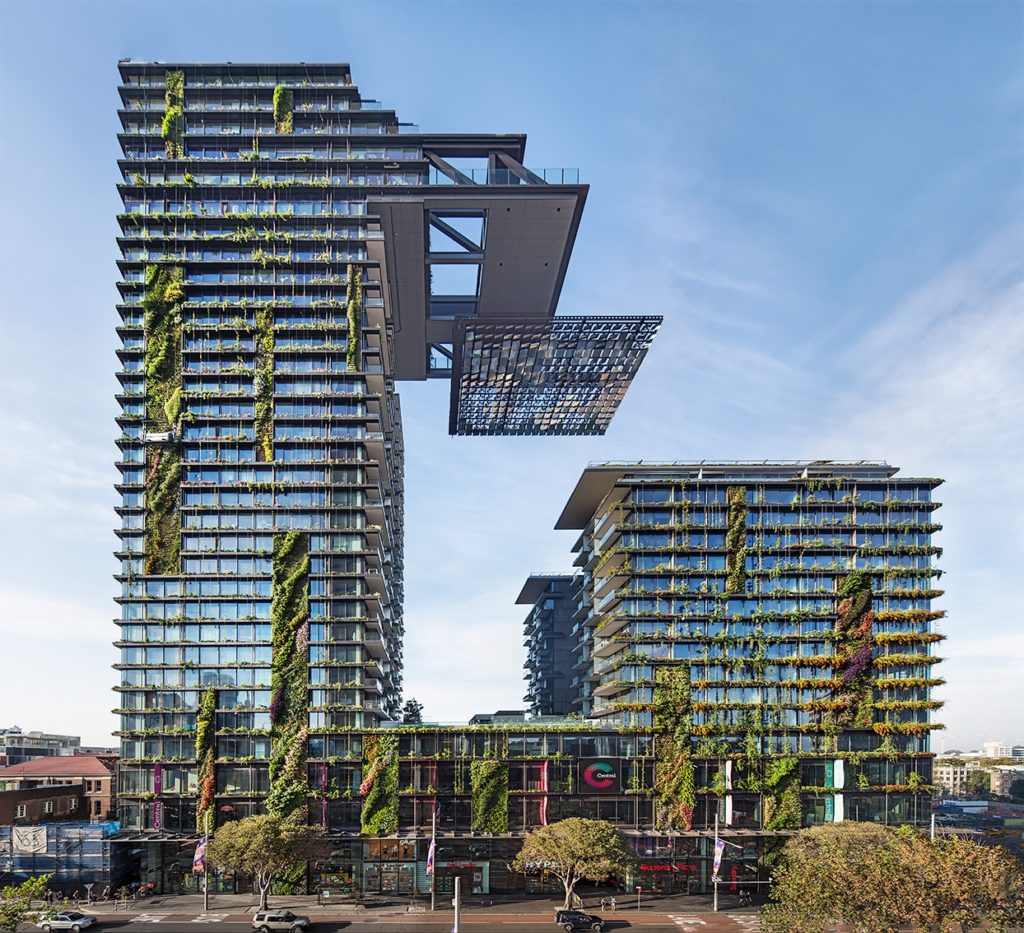
One Central Park: Photo via Patrick Blanc from Frasers Property & Sekuisi House by (C) Murray Fredericks
MARINA BAY SANDS INTEGRATED RESORT SKYPARK, SINGAPORE
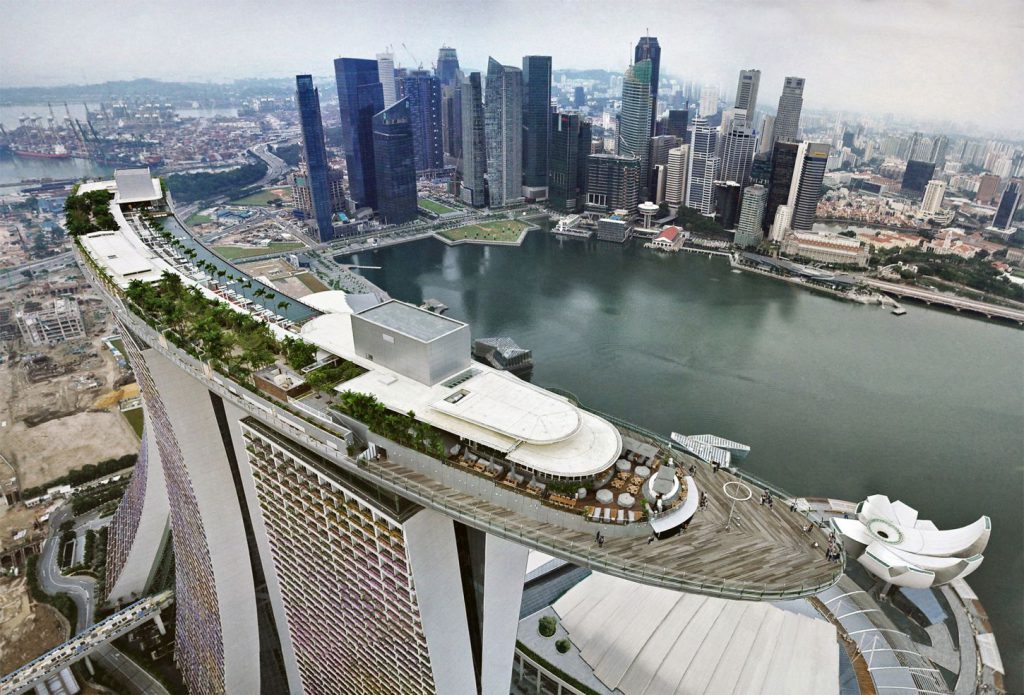
Marina Bay Sands aerial view of SkyPark on November 7, 2010; photo by Frank Pinckers, courtesy of Safdie Architects
MUSEE DU QUAI BRANLY GREENWALL, PARIS, FRANCE
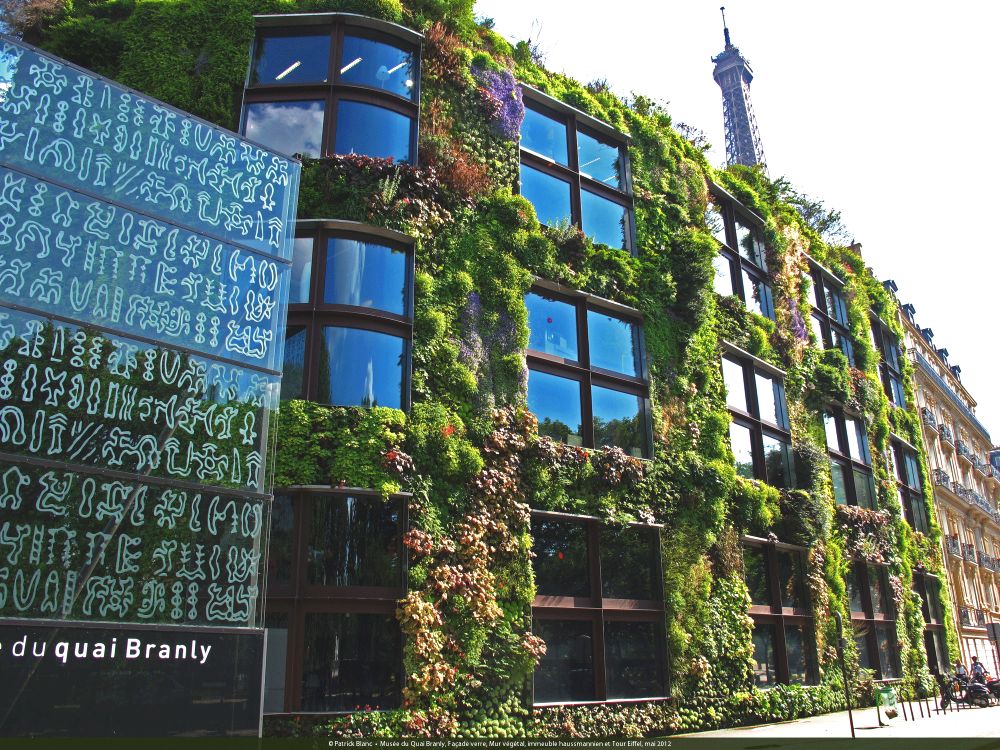
The original Musée du quai Branly Mur Végétal, May 2012, Photo Courtesy and Copyright Patrick Blanc. Musée du Quai Branly, Façade verre, Mur végétal, immeuble haussmannien et Tour Eiffel, mai 2012
HIGH LINE, NEW YORK, USA
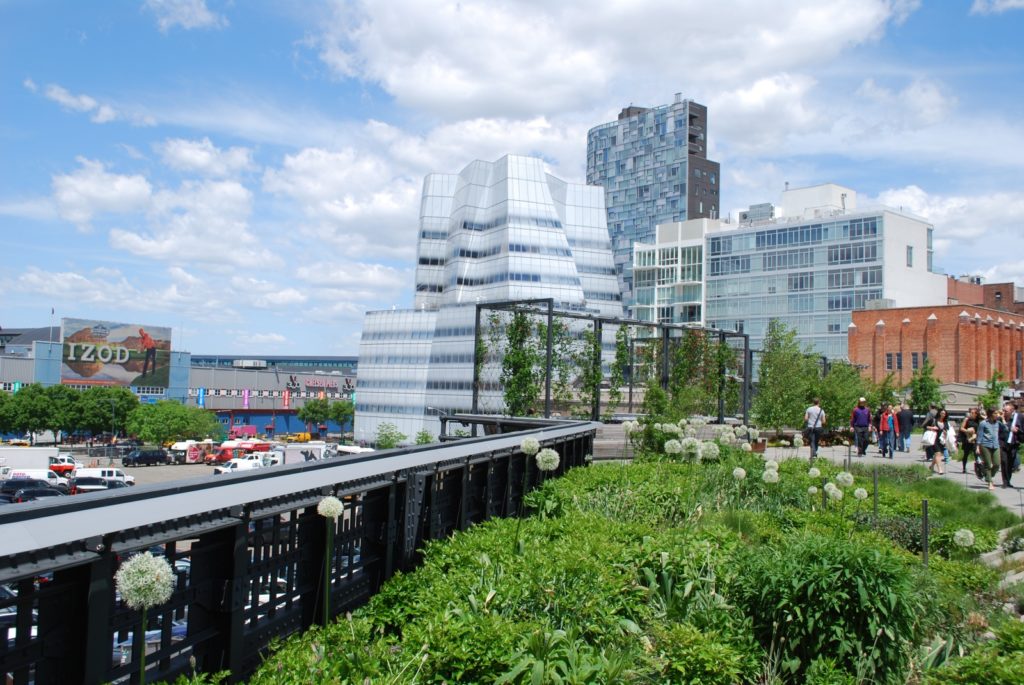
The High Line on May 11, 2012; Photo Courtesy of and ©Steven L. Cantor
GARDENS BY THE BAY, CLOUD FOREST CONSERVATORY’S CLOUD MOUNTAIN, SINGAPORE
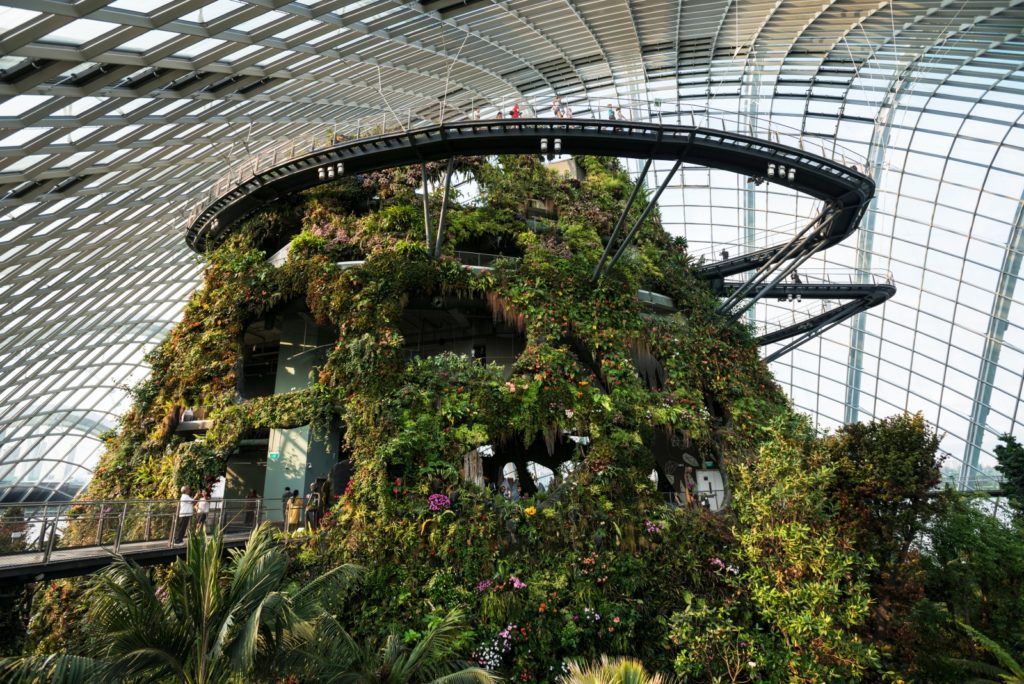
Cloud Mountain, Cloud Forest Conservatory, Gardens by the Bay. Photo courtesy of Tropical Environment Pte Ltd
In The Future Of Skyscrapers. episode, they also mention a book, “2100: A Dystopian Utopia / The City After Climate Change” by Vanessa Keith, a registered architect and the Principal of StudioTEKA, which she founded in 2003. Based in New York city, StudioTEKA is a boutique firm that engages in both built and research based design work.
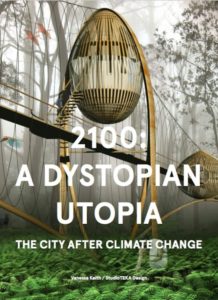 Nilay Patel continues: Fast forward to the year 2100. New York, along with Phoenix, Beijing, Sao Paulo, Manila, and many more of the world’s most populated cities, is irrevocably changed. Much of the earth’s great middle swath is subject to droughts, wildfires, and desertification, while increasingly frequent super storms plague coastal areas, destroying precious agricultural lands by bringing seawater far inland.
Nilay Patel continues: Fast forward to the year 2100. New York, along with Phoenix, Beijing, Sao Paulo, Manila, and many more of the world’s most populated cities, is irrevocably changed. Much of the earth’s great middle swath is subject to droughts, wildfires, and desertification, while increasingly frequent super storms plague coastal areas, destroying precious agricultural lands by bringing seawater far inland.
Where in the world shall we live, and what will our built environments be like?
How can we change our way of life to be more in keeping with natural systems and processes? Through 2100: A Dystopian Utopia, Vanessa Keith and StudioTEKA visualize possible design solutions to suggest the profound adaptability and possibilities of the design field to meet environmental challenges in the future. The issue is framed by noted sociologist, Saskia Sassen, with her preface and advocacy of “delegating back to the environment”.
The book is now being turned into a virtual reality game. In it, she imagines how cities of the future might adapt to global warming. And one theme that emerges is the reuse of old structures for new purposes.

Read more: The Future Of: The Verge’s Netflix show about the future of everything is now streaming
[ad_2]
Source link









More Stories
How to set up Hotspot on iPad?
Top 5 Best Power Bank Portable Chargers in 2018 Reviews
Rad Power Bikes CEO Mike Radenbaugh replaced by former Sony leader Phil Molyneux – GeekWire